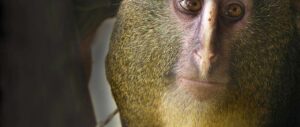
- Profile
- Tour Operators
- Accommodation
- prev
- next
- Get directions
- Website
- Bookmark
- Share
- Become an influencer
- prev
- next
Overview
Lomami national park is one of the latest established Congo national park in a period of 40 years since 1970, covering an area of 8,874 kilometers squared it was officially established by the Congo pre minister on the seventh of July 2016. Lomami national park is the second national park to be created without internal human settlement.
Lomami national park lies in the Congo rainforest basin which is the second largest rainforest on planet, the park is located in one of the most remote parts of the country hence it’s un spoilt state in nature though in the recent years the need for ivory led to the destruction of the parks wildlife more so elephants by poachers and rebel groups.
The existence of the park was through collaboration of the Lukuru foundation, ICCN, Congolese army, wild cat foundation and many more organizations including some volunteering locals and the Congolese government.
In the year 2007, a Congolese endemic species known as bonobo (an ape) was found in parts of Lomami national park, this area had no human settlements, no roads and agricultural activities even no four wheel vehicles could penetrate the mysterious wild Congo basin Lomami rainforest national park but was highly threatened by hunters from near and far away.
A new monkey that is said to be new to science is said to have been found within Lomami known as Lesula.
Lomami national park is the ninth national park in Congo; the park derives its name from the Lomami River found within the parks boundaries near Kindu city and Kisangani city, the park is situated near two provinces of Tshopo and Maniema. Lomami national park is rich with a diversity of Savannah grasslands, hills, rivers, wildlife and tropical rainforests.
There are three magnificent rivers situated within the Lomami national park this have been water catchment for wildlife, and the rivers are Lomami, Tshuapa and Lualaba. This park came to existence with the help of the Lukuru foundation with it’s had researchersJohn and Terese Hart who entered in the unknownand discovered a lot hence promoting the creation of this protected area.
Location
-
Tshopo, Democratic Republic of the Congo
Vital Park Information
Democratic Republic of the Congo
8 879 km²
Water quality in the Democratic Republic of the Congo is in need of improvement. Only 46 percent of the population has access to clean and safe drinking water
Congolese franc, Zairean zaire
January, February, March, April, May, June, July, August, September, October, November, December
The park can be visited all year round but the best time is during the dry season.




